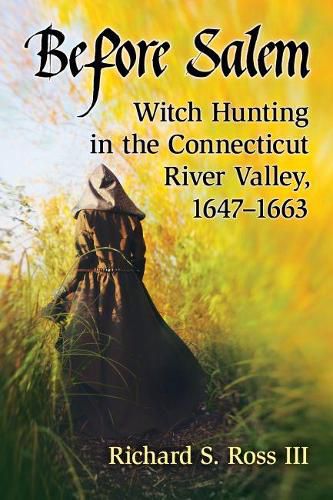Readings Newsletter
Become a Readings Member to make your shopping experience even easier.
Sign in or sign up for free!
You’re not far away from qualifying for FREE standard shipping within Australia
You’ve qualified for FREE standard shipping within Australia
The cart is loading…






This title is printed to order. This book may have been self-published. If so, we cannot guarantee the quality of the content. In the main most books will have gone through the editing process however some may not. We therefore suggest that you be aware of this before ordering this book. If in doubt check either the author or publisher’s details as we are unable to accept any returns unless they are faulty. Please contact us if you have any questions.
From 1647-1663 eleven people were hanged as witches on the New England frontier, in the Connecticut River Valley. The outbreak of witch hunting in New England was directly influenced by the English Civil War and the witchcraft trials begun in 1644 led by the witch-hunter Matthew Hopkins in East Anglia, England. The authorities in New England were armed with a legal manual influenced by recent English demonological writings for identifying a witch and new techniques pioneered by Hopkins for examining witches. This book examines why the witch hysteria first erupted in the Connecticut River Valley. The accounts from this first outbreak of witch hunting included information on the devil’s role, demonic possession, bewitchment, apotropaic magic, witch accusations, legal issues, and the role of the clergy in these trials. These early witch hunting accounts later influenced contemporary writers on the Salem witch trials in 1692.
This study offers a fresh assessment of the first outbreak of witch accusations, trials and executions in the Connecticut River Valley. It discusses the witchcraft trials before Salem and the reasons for the continued witch hunting that led to the executions of convicted witches up to 1663. After 1663 the hanging of witches was ended in Connecticut. The book concludes with a discussion as to why these executions ceased and how the local communities resolved the continuing conflict over their fear of witches in the face of a progressive magistracy unwilling to try and convict witches. Apotropaic magic is examined with evidence linking some aspects to specific occupations. The source of the Connecticut document
Grounds for Examination of a Witch
is identified.
$9.00 standard shipping within Australia
FREE standard shipping within Australia for orders over $100.00
Express & International shipping calculated at checkout
This title is printed to order. This book may have been self-published. If so, we cannot guarantee the quality of the content. In the main most books will have gone through the editing process however some may not. We therefore suggest that you be aware of this before ordering this book. If in doubt check either the author or publisher’s details as we are unable to accept any returns unless they are faulty. Please contact us if you have any questions.
From 1647-1663 eleven people were hanged as witches on the New England frontier, in the Connecticut River Valley. The outbreak of witch hunting in New England was directly influenced by the English Civil War and the witchcraft trials begun in 1644 led by the witch-hunter Matthew Hopkins in East Anglia, England. The authorities in New England were armed with a legal manual influenced by recent English demonological writings for identifying a witch and new techniques pioneered by Hopkins for examining witches. This book examines why the witch hysteria first erupted in the Connecticut River Valley. The accounts from this first outbreak of witch hunting included information on the devil’s role, demonic possession, bewitchment, apotropaic magic, witch accusations, legal issues, and the role of the clergy in these trials. These early witch hunting accounts later influenced contemporary writers on the Salem witch trials in 1692.
This study offers a fresh assessment of the first outbreak of witch accusations, trials and executions in the Connecticut River Valley. It discusses the witchcraft trials before Salem and the reasons for the continued witch hunting that led to the executions of convicted witches up to 1663. After 1663 the hanging of witches was ended in Connecticut. The book concludes with a discussion as to why these executions ceased and how the local communities resolved the continuing conflict over their fear of witches in the face of a progressive magistracy unwilling to try and convict witches. Apotropaic magic is examined with evidence linking some aspects to specific occupations. The source of the Connecticut document
Grounds for Examination of a Witch
is identified.